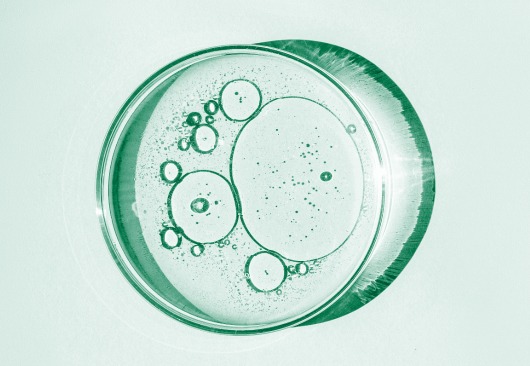In vitro fertilization (IVF) is one type of assisted reproductive technology (ART). It involves retrieving viable eggs that are fertilized outside the body and then transferred to the lining of the uterus for implantation.

1.Pre-cycle fertility testing for women: Before treatment can begin, an extensive series of tests are performed to better understand how infertility is impacting your ability to conceive.
2.Stimulation of the ovaries to produce several eggs during one menstrual cycle: A regiment of injectable medications is administered over a two-week period to induce the production of multiple eggs in one cycle.
3.Retrieval of the eggs from each ovary: An outpatient surgical procedure is performed to extract the mature eggs from your ovaries.
4.Fertilization of the eggs in laboratory by either conventional fertilization or intracytoplasmic sperm injection (ICSI): Your eggs will be introduced to the sperm sample and then watched over by an embryologist for about five days.
5.Embryo implantation into the uterus: Once your embryos have matured enough, there is another outpatient procedure to transfer them to your uterus for implantation.

Not to be confused with a mock embryo transfer, a mock cycle in IVF treatment is a procedure that replicates the physiological conditions that you’ll experience during an IVF cycle so that endometrial testing can be performed. Unlike a full IVF cycle, a mock cycle does not include an embryo transfer. Instead, an endometrial biopsy is performed on the day when the transfer would ordinarily take place. The goal of this procedure is to get a better understanding of your window of implantation (WOI) by analyzing the receptivity status of your endometrium on the day when you were predicted to be most receptive. Mock cycles can be medicated or unmedicated, depending on the specific treatment protocol your fertility specialist has designed to fit your fertility needs.
The window of implantation is the two- to three-day window during a menstrual cycle when the endometrium is the most receptive to embryo implantation. On average, the WOI occurs on days 19 to 21, but for as many as 30% of infertility patients it can occur at a non-standard time or be shorter than average. If you have a non-standard WOI, it can mean that your embryo transfer procedure might not be scheduled at the optimal time.
For IVF veterans, the following timeline may look familiar. That’s because it is the exact same timeline as in vitro fertilization with frozen embryo transfer (FET-IVF). As mentioned above, the key difference is that there will be no embryo transfer at the end of the cycle. The following is a breakdown of each step and when in the cycle they occur (although it should be noted that your personal mock cycle timeline will reflect your fertility needs and goals):
| Cycle day | What to expect |
|---|---|
| Day 2 or 3 | You will have an appointment for baseline ultrasound and bloodwork. This baseline will be used to assess how you are responding to hormone medication. After your baseline, you’ll begin your medication regimen. |
| Days 3 to 14 | You will continue taking estrogen as prescribed by your fertility specialist. |
| Day 20 or 21 | Your biopsy is scheduled for the same day that you would otherwise have an embryo transfer. |
The simplest answer is that mock cycles are performed when your fertility specialist feels they need more accurate information about your endometrial receptivity in order to optimize the timing of your embryo transfer. Below, you’ll find some of the most common reasons your doctor may recommend having a mock cycle.
Your previous IVF cycle failed
It is very common to undergo more diagnostic testing after a failed IVF treatment cycle in order to identify any underlying issues that prevented successful pregnancy. As endometrial receptivity plays a key role in the embryo implantation process, recreating the physiological conditions of an IVF cycle will better inform your next embryo transfer procedure.
You’ve experienced repeated implantation failure (RIF)
Repeated implantation failure (RIF) can also be described as multiple miscarriages. This occurs when the endometrium rejects an egg or halts the development of a fetus. Research has shown that having an accurate picture of a patient’s receptivity status can greatly improve IVF success rates for those who experience RIF.
You have a limited number of embryos
For prospective parents who only have a set number of embryos, it can be especially important to ensure each embryo transferred has the best chance to implant. Undergoing a mock cycle before doing FET-IVF will help determine the most optimal timing for your embryo transfer.
Every endometrial receptivity test currently on the market, including Inti Lab’s MIRA™, requires a mock cycle and endometrial biopsy. However, we’ve developed a new test, ora™, that only requires a blood sample to determine endometrial receptivity through the use of blood-based microRNA biomarkers. This blood sample still needs to be taken on the same day a biopsy would occur, but it can also be taken on the day of an embryo transfer. This means that ora™ has the potential to eliminate the need for a mock cycle altogether. For more information about microRNA and the science behind endometrial receptivity testing, you can read our explainer here.